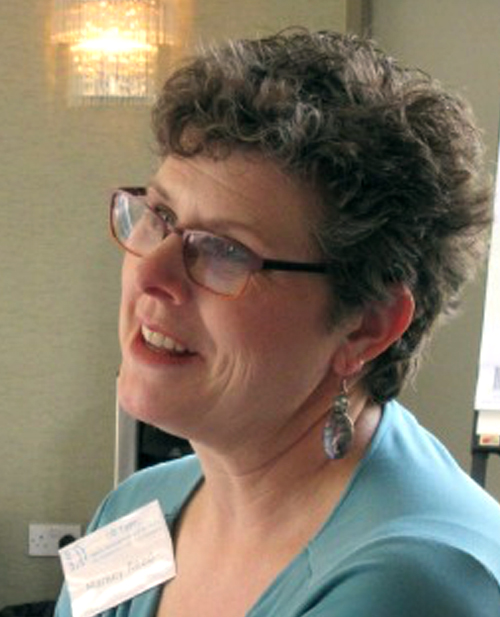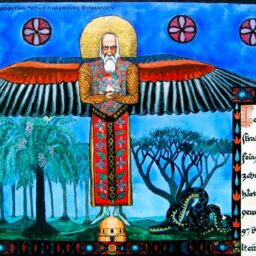
How Timelines Move Goal Lines
Markey Read, January 4, 2017

The cultural norm for setting and managing goals assumes there is a “right way” and a “wrong way.” We often discuss goals in the context of “Judging vs. Perceiving Types.” For example, methods like SMART goals tout that goals should be Specific, Measurable, Achievable, Realistic, and Time-bound (Doran, 1981). While this seems like a reasonable approach to many, it does not accommodate the need to maintain an exploratory approach that many types require in order to stay engaged with their goals. The SMART goals system tends to favor the natural tendencies of STJ types.
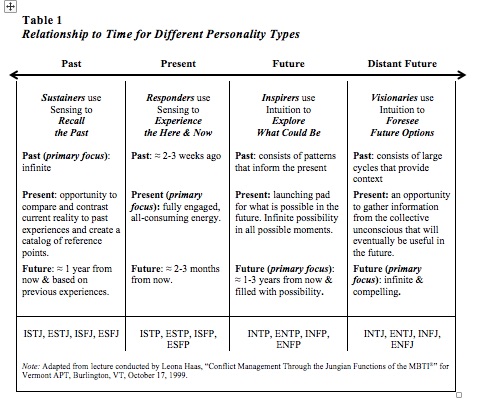
Sustainers, Introverted Sensing Types (dominant or auxiliary Si) tend to have a past orientation and to perceive new information and experiences through their senses and compare them to past experiences. Verifying through comparison is a way to confirm that the present information or event is actually new and real. The past is personal and infinite and can often be recalled with great clarity. While Sustainers are physically present and engaged in a conversation, their minds are busy comparing and contrasting their current experience to past experiences—this is how they orient themselves in time and experience the present. Sustainers tend to write goals that resemble long tasks lists and often participate in the process by gathering the specifications for success, creating frameworks for achievement, and gathering the required resources. Sustainers tend to focus on what is practical and achievable; they may express doubt if a goal or project seems to be wasteful or unproven and can sound like naysayers when they question the feasibility of a project or goal. They often can write well-developed and practically sound one-year action plans and are likely to track progress on a daily, weekly, and monthly basis. Once the process extends beyond a year into the future, however, Sustainers tend to get more uncomfortable and become less confident that they have enough information to accurately anticipate the future. The personality types of Sustainers (ISTJ, ESTJ, ISFJ, ESFJ) tend to bring a managing or administering energy to their leadership and work style.
Responders, Extraverted Sensing Types (dominant or auxiliary Se) tend to have a present time orientation and perceive each moment as a fresh new experience in real time. The verification for Responders comes from touching, smelling, hearing, tasting, and seeing the information. Since so much is actually perceived in the moment, Responders tend not to have a lot of energy for reflecting on the past or planning for the future. If Responders write goals at all, they tend to be comfortable planning about two to three months into the future. Planning past three months in any significant way seems pointless for most Responders because too many variables must be accounted for. Experience tells them that once a plan is finally implemented, so many aspects have already changed since the plan was developed that spending time developing longer range plans and goals is likely to be a waste of time. Responders can sometimes appear very goal-oriented because they often stay in perpetual motion, especially dominant Se types (ESTP & ESFP), and eventually all that action moves projects forward, and projects come to completion. They tend to push for taking action because they know they can figure out what is next by experiencing the project while in process; thus they can appear to others as bored or disengaged in the conversation. The personality types that prefer Se (ISTP, ESTP, ISFP, ESFP) tend to bring a responsive and immediate energy to their leadership and work styles.
Inspirers, Extraverted Intuiting Types (dominant or auxiliary Ne) tend to have a future orientation. They tend to perceive new information and experiences through their impressions and inspirations, and they imagine many possible ways this data could be used in the future. Inspirers are active in discussions, suggesting new ideas and new ways to use current information. If only a few options are presented, the Inspirers will be the first to offer more options; it is through the process of considering options that they begin to understand what is feasible. They tend to create lists of ideas or mind-maps of many possibilities that could happen in the future, based on the current conversation. They tend to bounce between the present moment and many possible future moments almost simultaneously; this fluidity in time can cause others to see them as being scattered or spread too thinly. Their plans tend to have loose timelines, include multiple options, and be subject to change without much notice to others. The possibilities may be in a list form, but Inspirers often embrace unconventional methods of reporting goals and plans. Their goals tend to become more and more general the further into the future they reach. Beyond two to three years, most Inspirers lose their enthusiasm for committing to goals because they know there are too many yet-to-be-discovered variables to be any more specific and it feels like they are limiting their options by writing them. The types that prefer Ne (INTP, ENTP, INFP, ENFP) bring an inspiring, facilitative, and flexible energy to their leadership style.
Visionaries, Introverted Intuiting Types (dominant or auxiliary Ni) tend to have a distant future orientation. Visionaries tend to perceive new information and experiences through their insights and impressions and use this filter to develop or verify various theories about the nature of environments, organizations, and people. While visionaries are physically present, their minds are partially engaged with the future and developing plans for how the current information could be applied to a project or theory later on. The future is actually infinite for them. They tend to create grand plans that reach five to ten years into the future and are often considered “strategic planners.” Visionaries seem to have an ability to “see into the future” and return with fully-formed ideas. By definition, however, strategies do not include highly detailed implementation plans; they are usually filled with big ideas, broad-stroke action items, milestones, and measurements for success. As a result, Visionaries tend to create goals that skip over many specific details and focus on the desired end result or vision. They may even use symbols that embody the ideal of the goal or speak in themes about the goal. This can appear as unrealistic and out of touch with the current realities of the organization or group. After creating the grand vision, they tend to move confidently into the future, knowing that the resources needed to achieve the vision will somehow appear when needed. The types that prefer Ni (INTJ, ENTJ, INFJ, ENFJ) tend to bring a predictive, visionary, and aspirational energy to their leadership and work style.
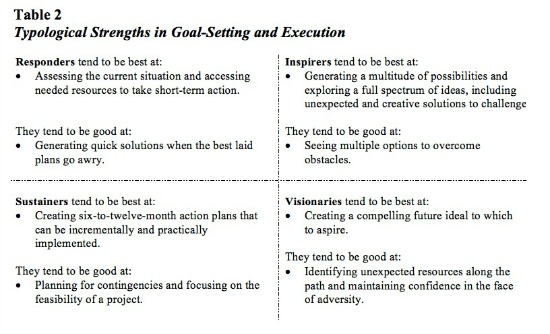
Leading the Process with Introverted Sensation
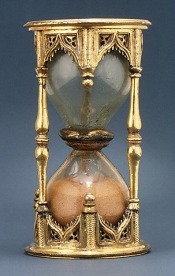
Why this process worked for Stewart: He was given the opportunity to ensure that the safety, regulatory, and inventory details were in place before handing it off to the field supervisor. In addition, he had a long-standing relationship with the right-of-way-manager and knew from experience that she was reliable. With this solid base, he was able to give senior management the information they needed.
If a Sustainer does not know ahead of time that a detailed plan will result from the process, he or she may not fully participate. To help Sustainers stay engaged, they need reassurance that before any action starts, there will be time to develop a detailed implementation plan, and leaders must allocate time and resources to make sure that commitment is met. Sustainers need paper, project management software, or other tools for making lists, drawing diagrams, or tracking progress so they can quietly give their attention to factual accuracy (or its lack) while sitting at the table. A Sustainer who does not see the practical feasibility of a project will not want to participate in the implementation. Sustainers ensure consistency with financial and other resources that if not considered, could derail a project.
Leading the Process with Extraverted Sensation

Why this process worked for Cory: He was intimate with the materials and how they interact with the machinery, and he understood the desired end result. In the process of completing the project, he was able to respond quickly to the breakdown and still provide the customer with a quality product.
If a Responder does not get to be in action relatively soon in the process, he or she may express boredom and could become disruptive. To help Responders participate in the process, leaders should identify some actions that could be taken early in the process and allow for the Responders to get physically engaged. Responders need time to move around, as a group or individually, so their managers could consider including movement as an essential part of discussing and creating the plan. Providing quiet manipulatives like stress balls, colored markers and paper play dough, and pipe cleaners on the table at the meeting gives Responders an outlet for their energy, and helps them stay engaged in the meeting. Additionally, giving a Responder the job of scribe, the person who records a brainstorm or other information on the white board, is a good use of their energy. (Note: the roles of scribe and note-taker are different, even though these two roles are conflated in meetings. The note-taker takes the minutes, including decisions reached by a team, and distributes them in the form of a report.) Identifying an early action for Responders to take, e.g., to test-drive an idea with the customer, allows them to contribute their strengths of refining an idea to make it feasible in the real world.
Leading the Process with Extraverted Intuition

Why this process worked for Joe: He was the first contact with the client and was able to explore many possibilities before bringing it to his team. And although his team did not enjoy the brainstorming process as much as he did, Joe respected them and appreciated that they were key to fleshing out the project and delivering a quality product to the client.
If an Inspirer is not provided with multiple options or the ability to generate possibilities, he or she may disengage. To support an Inspirer in participating, a leader could start with some time-limited brainstorming. Additionally, posting a piece of flip-chart paper on the wall creates a “parking lot” for good ideas that may not fit into the current conversation. Inspirers will likely reopen points of discussion and even reconsider “the plan” during implementation; this can be an opportunity to check the plan for further fine tuning. This revisiting does not have to derail projects; it often enhances the outcome by providing continual process improvements. A stifled Inspirer will brainstorm with or without the group, creating a back-channel of ideas. Including brainstorming early ensures that the best option is selected, as opposed to the first or easiest, and enables Inspirers to participate in the creation process.
Leading the Process with Introverted Intuition

Why this process worked for Jay: He lifted his head above the daily tasks and connected with the vision of his company growing and prospering. He was then able to take the time and be patient with the process of growth because he kept his eye on the long-term goal.
If a Visionary does not know what the desired result is, he or she may withdraw from the conversation. To support a Visionary in staying engaged, a leader needs to allow time early in the process to imagine how the current situation, issue, or challenge could be different in the future. Visionary individuals need time to write or draw their insights and share them either in small discussion or in a very abbreviated form in the larger group. Being clear about the intent of a meeting or conversation—even if that intent is to explore possible solutions to an issue without actually coming to a conclusion—also helps Visionaries be more comfortable within that context. A Visionary without a compelling idea for the future will daydream the meeting away. Visionaries can envision and clarify the objective if they are invited to and are given the time to contemplate and articulate it, and they can often see the best route forward.
Successful development and implementation of goals requires groups to engage in all four perceiving functions. Everyone is capable of flexing into all four ways of operating throughout the day. Individuals tend to start with their most preferred mode and then access the others according to the natural type dynamics of the individual’s personality type. This may result in a less graceful and even awkward expression of the information-gathering cognitive processes, depending on how high up in consciousness they are for the individual, but that is generally a good thing: it means that team members are flexing out of their comfort zones.
When writing goals or creating strategies, keeping personality type in mind can help access the natural powers of the group and overcome the natural blind spots. The process needs to start with strengths and then build skills in weaker areas by leaning into the natural abilities of co-workers, colleagues, and associates. Goals can be used as guidelines and mile-markers; they do not have to be thought of as laws written in stone. There is no right way of writing and using goals. Experimentation to find what is effective for the situation and the people involved is the best approach.
References
Doran, G. T. (1981, November). There’s a S.M.A.R.T. way to write management’s goals and objectives. Management Review. AMA FORUM. 70 (11): 35–36.
Haas, L. (1999, Oct. 17). Conflict management through the Jungian functions of the MBTI®. Lecture conducted from Vermont APT, Burlington, VT.
Read, M. (2014). Your cast of characters: A guide to leadership development. Williston, VT: Read Communications.
Images
Andrzej Garabasz (photographer), “Wall Sundial in Warsaw’s Old Town” (2014).
Hourglass (bronze and silver gilt), German (early 16th century). Courtesy: Metropolitan Museum of Art.
Jesse Millan, “VR Active Mode Works” (2007).
Trtswahili, “Kiswahili: leo katika historia” (2016).
Mobilos, “Fractal Clock” (2013).


